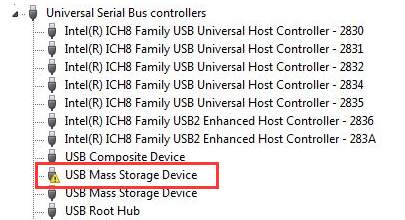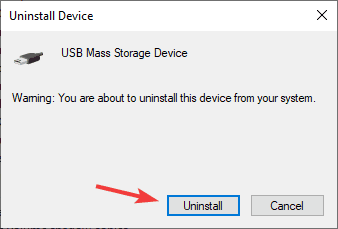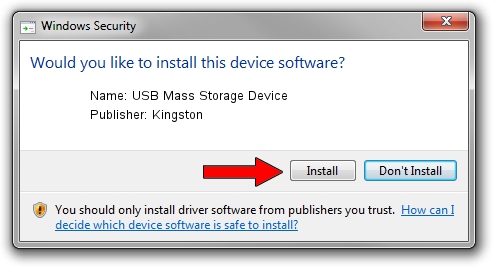Mass Storage Driver
- Mass Storage Controller Driver Windows 10
- Universal Mass Storage Drivers
- Mass Storage Driver For Windows Xp
- Mass Storage Driver Pack
The 3000LE Installation software provides the drivers needed for use with the Maxtor Personal Storage 3000LE in a Windows 98 Second Edition (SE) environment. DOWNLOAD 3000LE/Win98SE Driver (Style B). Mass Storage Controller Driver E6420 43 - DOWNLOAD a363e5b4ee Device drivers missing for mass storage cont, sm bus cont.In device manager, for my laptop, I have a yellow exclamation mark indicating device drivers missing for Mass Storage Controller, SM Bus Controler and Broadcom USH. Update your mass storage controller driver To update your device driver, you can head to your PC manufacturer’s website to download the latest driver. Your mass storage controller is no exception. If you have no time, no patience or no enough computer skill to find and download the correct driver, let Driver Easy help you then. This package supports the following driver models: USB Mass Storage Controller; Full Specifications. What's new in version 1.00.05.01. Release August 26, 2008. Date Added December 3, 2001. Right-click on the external drive, select Properties, then select Driver. Select Update Driver, then Next, then Search for a better driver (Recommended). Specify a location by selecting Browse now. Browse to the just-created USB Drivers folder on the Desktop and complete the driver update.
-->Secure Digital (SD) card technology began with portable, miniature memory cards, but with the release of the Secure Digital I/O (SDIO) specification, the Secure Digital Association (SDA) has broadened the definition of SD technology to include a large variety of card functions, such as Bluetooth devices, video cameras, Wireless LAN devices, and Global Positioning System (GPS) receivers. This document explains how the operating system supports the card function extensions to SD technology.
Card readers for many early SD storage devices were designed to connect to the USB bus. Windows manages these devices with the USB mass storage driver (usbstor.sys) and the native storage class driver (disk.sys), as depicted in the following diagram:
For a more complete description of the device stack that Windows creates for a memory card that connects to the USB bus, see Device Object Example for a USB Mass Storage Device.
The operating system provides support for SD host controllers that connect directly to the PCI bus. When the system enumerates an SD host controller, it loads a native SD bus driver (sdbus.sys). If a user inserts an SD memory card, Windows loads a native SD storage class driver (sffdisk.sys) and storage miniport driver (sffp_sd.sys) on top of the bus driver. If a user inserts an SD card with a different kind of function, such as GPS or wireless LAN, Windows loads a vendor-supplied driver for the device.
All device drivers in the SD stack, whether native or vendor-supplied, must communicate with the SD bus driver by calling routines in the static SD bus library (sdbus.lib). SD drivers must link to this library when they compile. The following diagram depicts the SD driver stack that the system creates when it enumerates an SD controller and accompanying cards:



SD device drivers cannot directly access the host-controller register set, nor can they embed pass-through commands for the host controller in I/O request packets (IRPs). SD device drivers issue commands to the host controller by calling the SD bus library routines, and then the library generates the appropriate SD commands for the host controller.
SD device drivers must handle standard PnP and power IRPs, but they do not request or manage hardware resources, such as ports, memory, or interrupt vectors. Consequently, SD device drivers are not required to map any hardware resources when handling an IRP_MN_START_DEVICE request. However, when an SD device driver receives an IRP_MN_STOP_DEVICE request, it must stop all I/O operations. Furthermore, the driver must close its interface to the SD bus driver in response to an IRP_MN_QUERY_REMOVE_DEVICE request.
When a hardware interrupt occurs, the SD bus library intercepts the interrupt, masks out further interrupts, and notifies the SD device driver by means of a callback routine that a hardware interrupt has occurred. For a description of the callback routine that the bus driver uses to notify an SD device driver of hardware interrupts, see PSDBUS_CALLBACK_ROUTINE. For a general explanation of how the SD driver stack and libraries manage hardware interrupts, see Handling Secure Digital (SD) Hardware Interrupts.
The ntddsd.h header file, which is provided in the Windows Driver Kit (WDK), declares the prototypes for the routines exposed by the SD bus library.
Although Windows 98 has been out of general circulation for well over a decade now, it might come as a surprise to some people that it’s still actively in use, especially in a business or specialized environment for running old software. There is actually a third party Service Pack for Windows 98 Second Edition which is still being updated well into 2013, even though Microsoft ended their support for Windows 98 on the 11th of July 2006! Obviously, hardware support from all major manufacturers has ended years ago so if you or your company still run Windows 98 in some capacity, it’s incredibly difficult to find compatible hardware and software for it.
As an example, a company I did some work for a while back purchased a Kingston Data Traveler USB flash drive for backup purposes on a computer that’s still running Windows 98. The problem is, due to some obsolete software that needs to run on Windows 98, the computer cannot be upgraded to newer versions of Windows such as 8, 7, Vista or even Windows XP. I’ve tried compatibility mode on Windows XP and it doesn’t work either, so it’s either upgrade the software or continue using Windows 98. Updating the old software is very expensive, so the decision was to stay with Windows 98 and try to source parts that can support this ageing operating system.
Mass Storage Controller Driver Windows 10
The immediate problem was getting the flash drive to work. Windows 98SE is actually not too bad at handling mass storage drivers for a USB storage device IF you have a driver disc that accompanied it or a download is available. 98SE doesn’t come with a generic mass storage driver that would install support for all standard USB storage devices like newer Windows versions, so not every device you insert will simply get recognised. Predictably, Kingston offers no support for their devices in Windows 98 so no driver can be installed to pick up the flash drive.
After much searching and testing, I finally managed to install the Kingston DataTraveler on Windows 98. This following method which I’m about to show you can work for most USB mass storage devices if your Windows 98 has detection problems. What I found was a generic Windows 98SE USB mass storage device driver that will work with many makes and models of the following:
that will work with many makes and models of the following:– USB Flash Drives
– Digital Photo and Video Cameras (that connect to the PC via USB)
– USB Hard Drives
– MP3 Players (including Apple iPod from v2.4)
– Sony PlayStation Portable (PSP)
This driver isn’t guaranteed to work with all devices because it’s a generic driver, and you shouldn’t install it if you have no issues in the first place. It does though work well for the purpose it was intended for, it did for me and has for many other people.
Installing the generic USB Mass Storage driver
1. Download Windows 98SE Generic USB Mass Storage Device Driver to the desktop.
Universal Mass Storage Drivers
2. Open Device Manager (right click My Computer -> Properties -> Device Manager) and remove ALL drivers for USB flash drives. This includes any drivers of removable devices previously installed from the “Disk drives” tree.
3. Remove all drivers for any USB controllers (under Universal Serial Bus controllers). Devices in Device Manager can be uninstalled by right clicking on an entry and selecting “Remove”. Also remove any Unknown/Other devices, those which have no installed driver.
Mass Storage Driver For Windows Xp
4. Run the nusb36e.exe driver installer. After that has completed, reboot the computer.
Mass Storage Driver Pack
5. During reboot, the computer will detect new devices and USB controllers and will ask for the Windows 98 install CD so make sure you have it to hand. The driver install window actually tells you to reboot after these controllers are installed but I didn’t have to. If you have any issues, then follow the advice and reboot a second time.
6. Then insert your USB storage device and it should get picked up by Windows. Don’t forget Windows 98 cannot read NTFS so the storage device needs to be formatted with FAT/FAT32 to be recognised with a drive letter. Open My Computer and your flash drive or device should be visible.
The 16GB flash drive above wasn’t a Kingston but still required the general USB mass storage driver to be installed for it to be detected. Do note that this driver is for English versions of Windows 98SE only and won’t work on the original Windows 98. You can visit the related MSFN forum thread for more support or updates to the driver in future.
